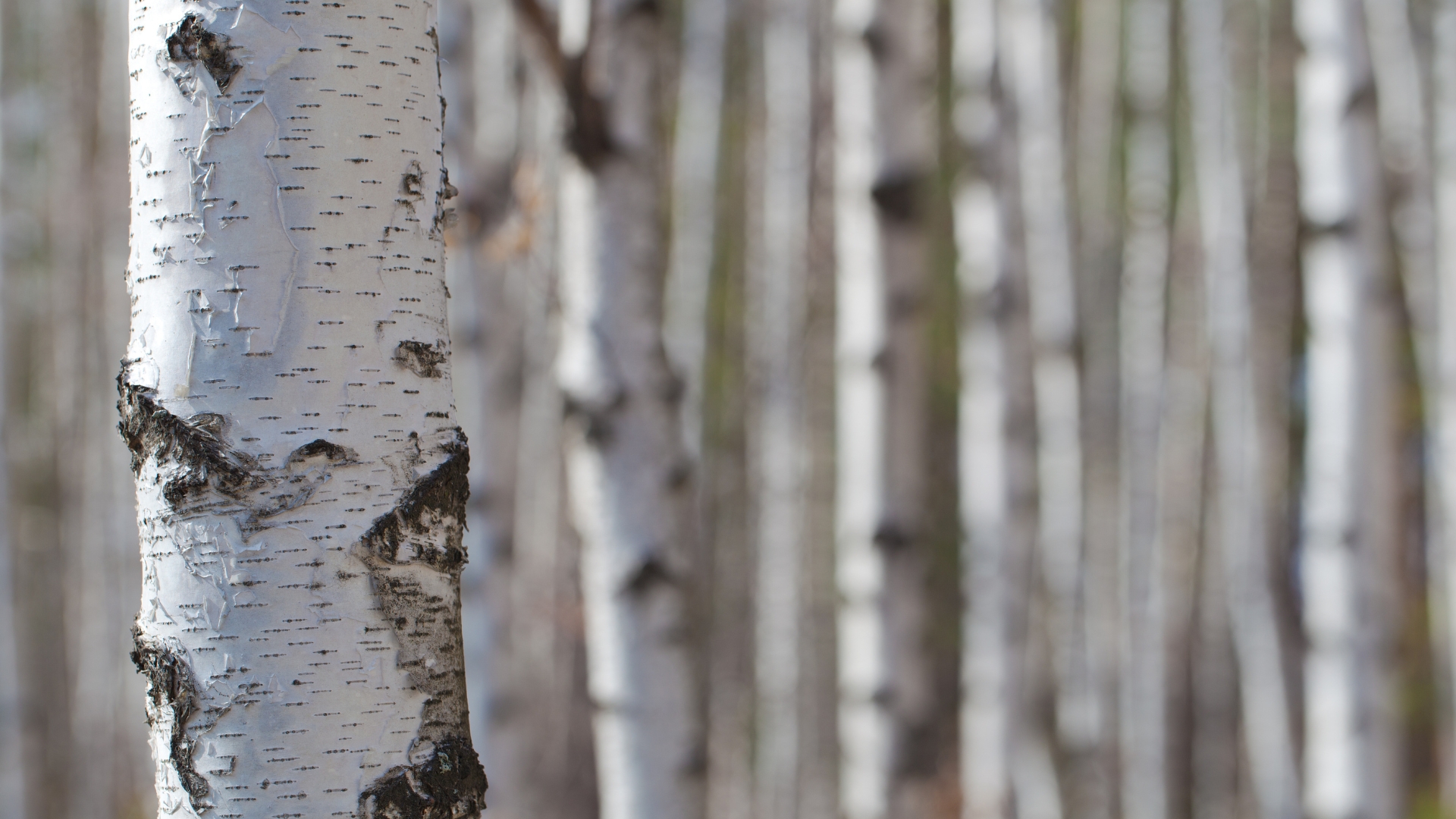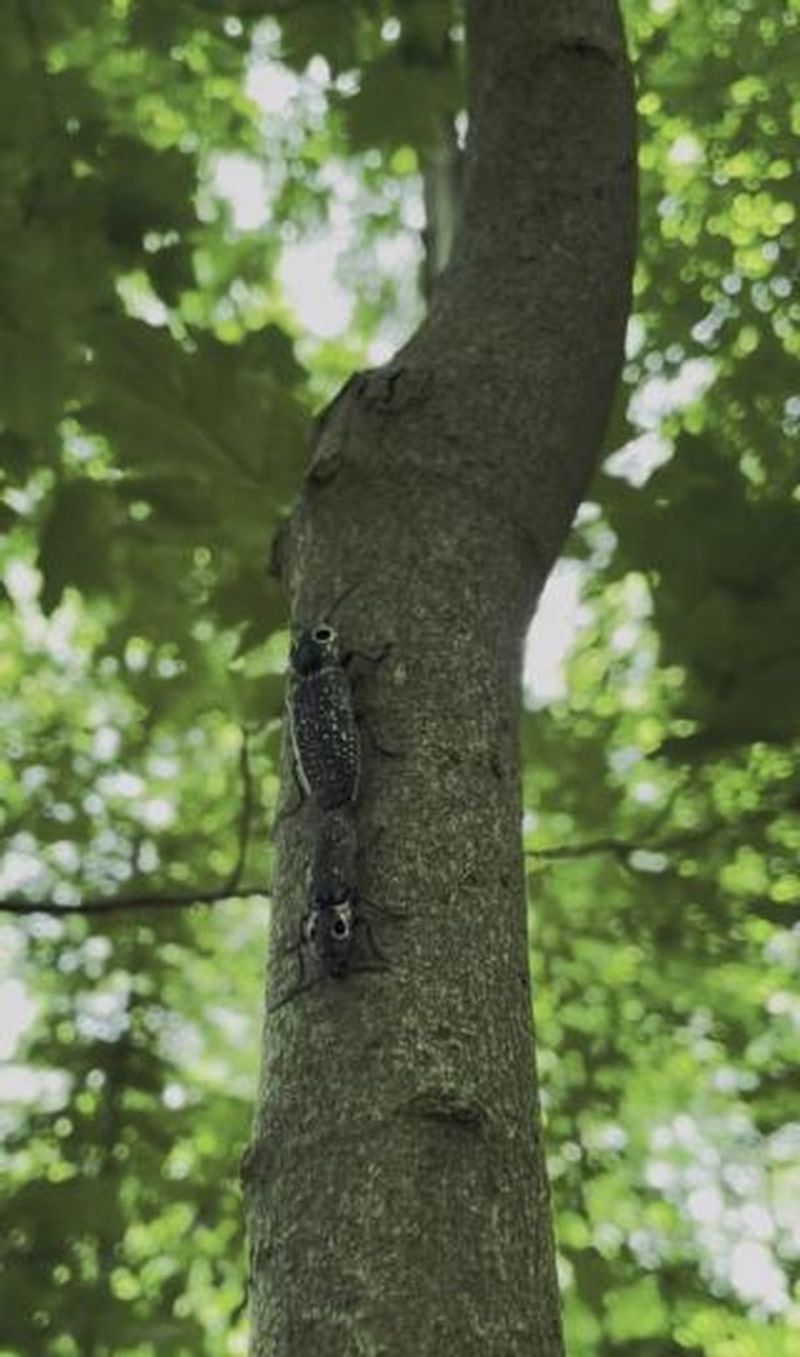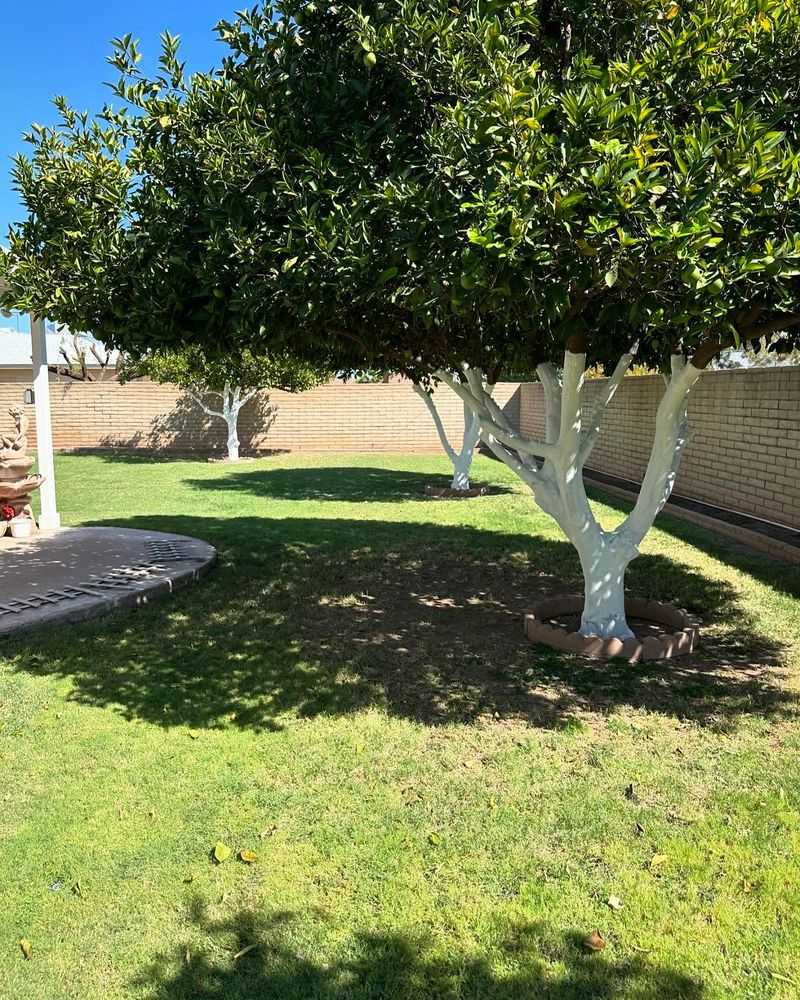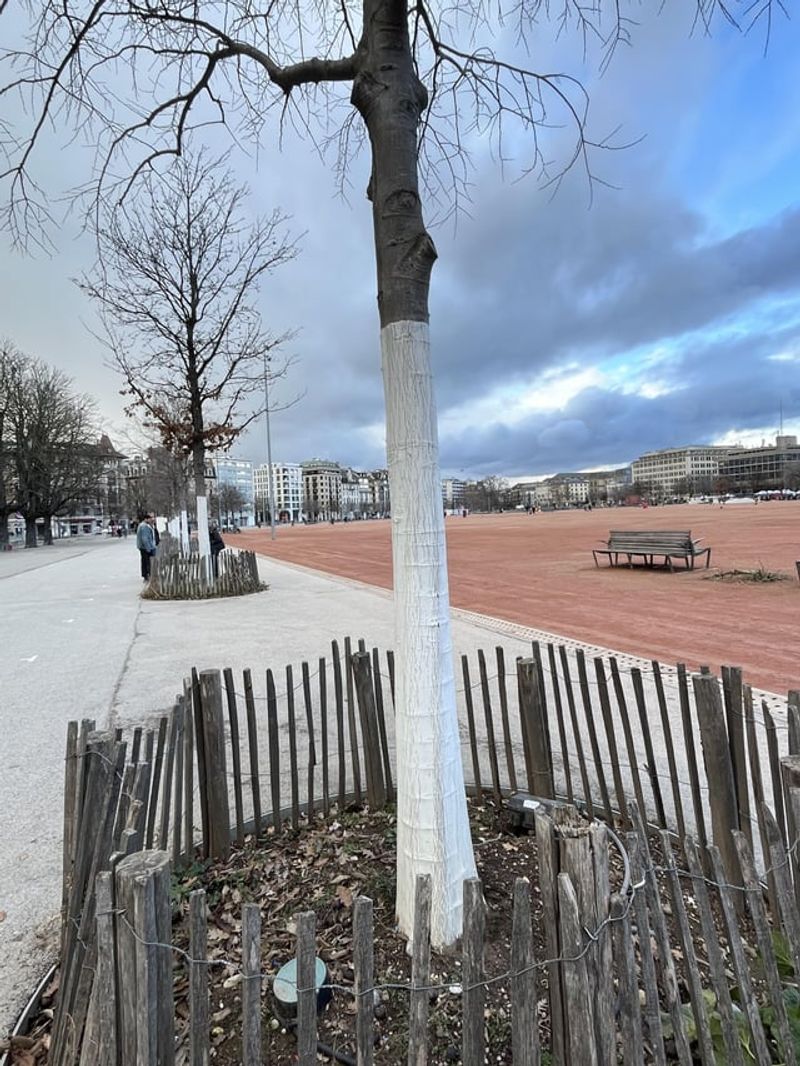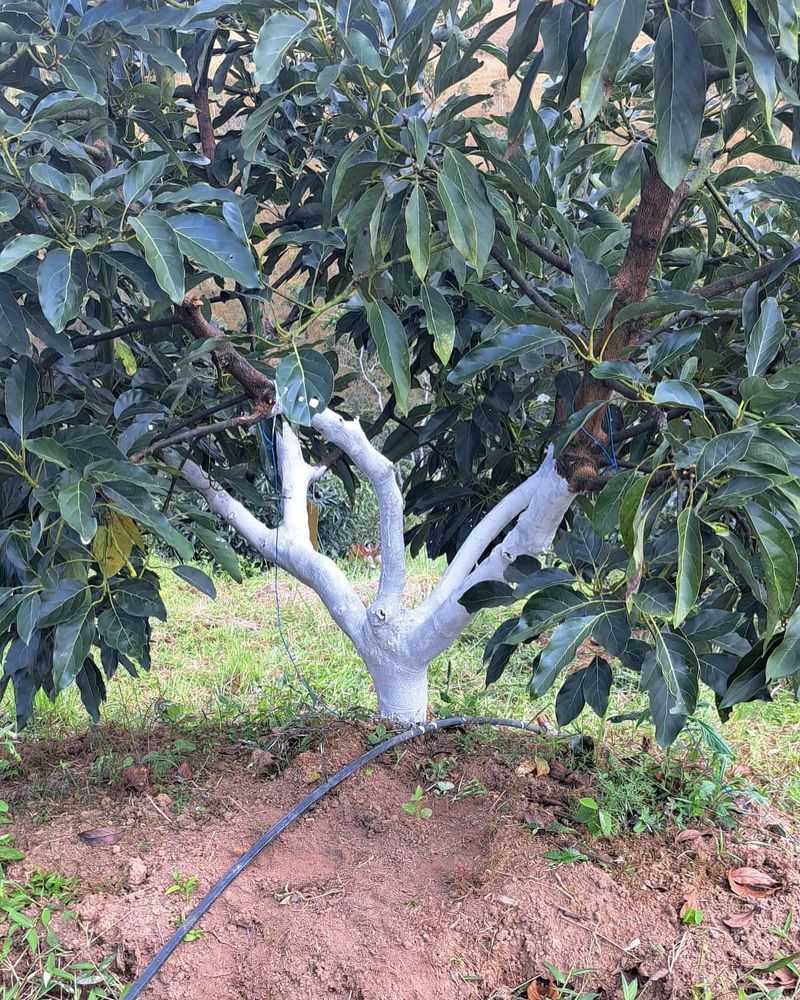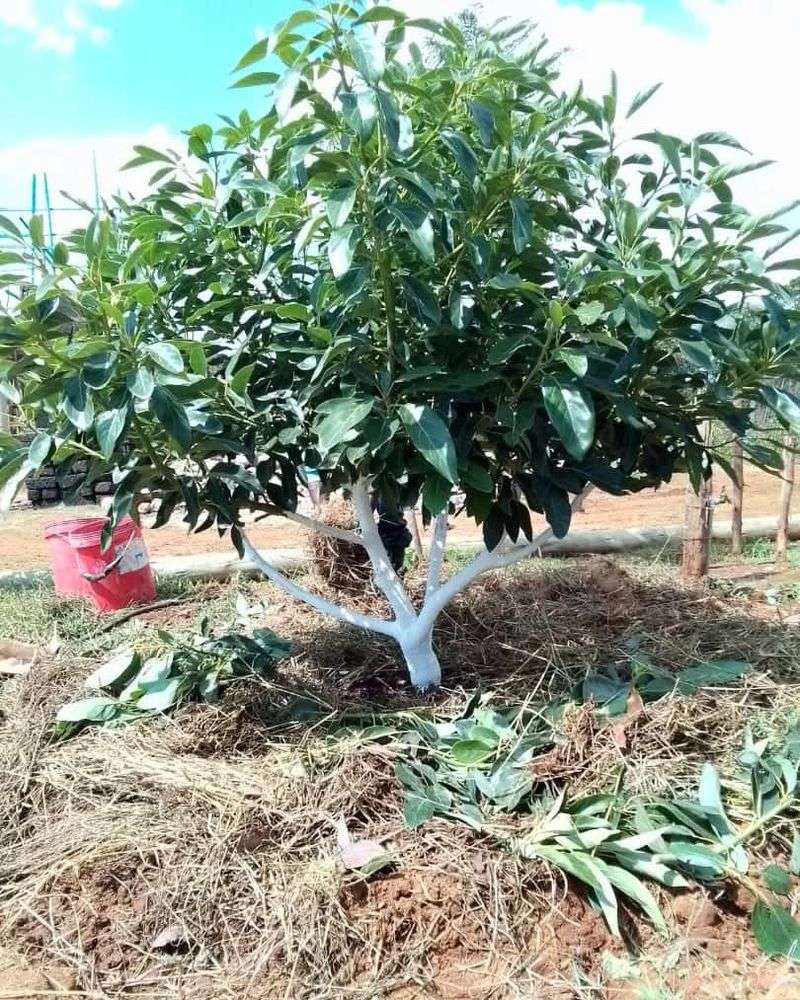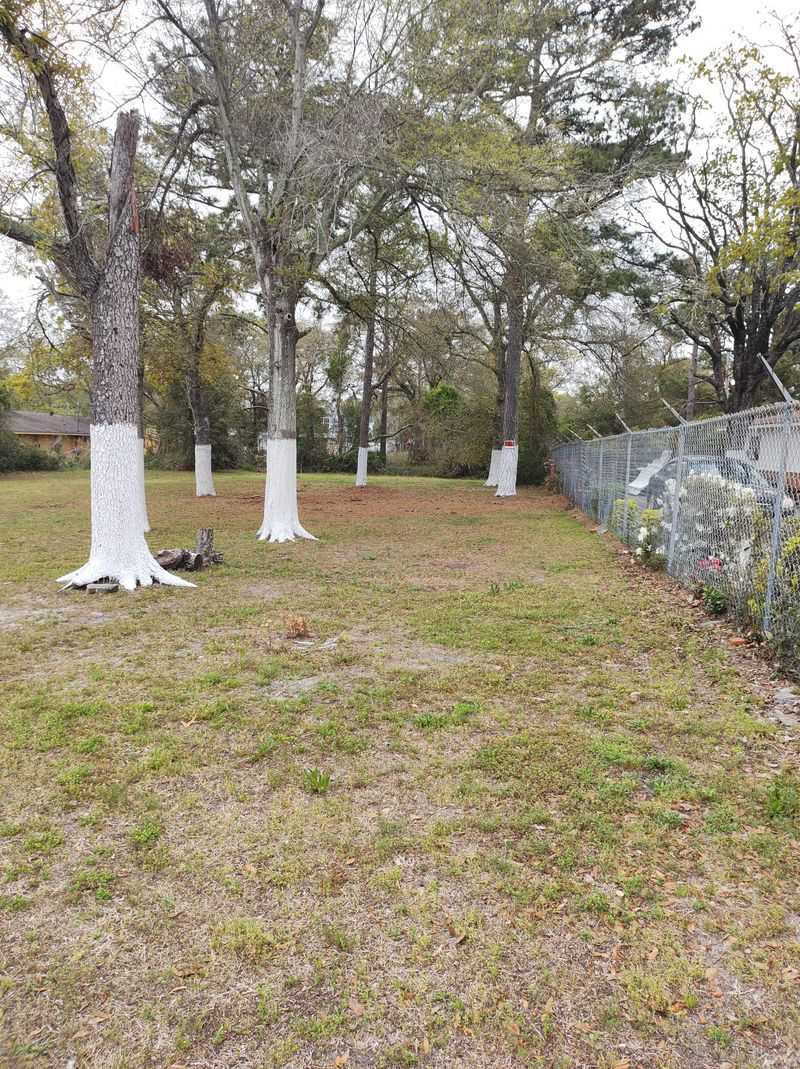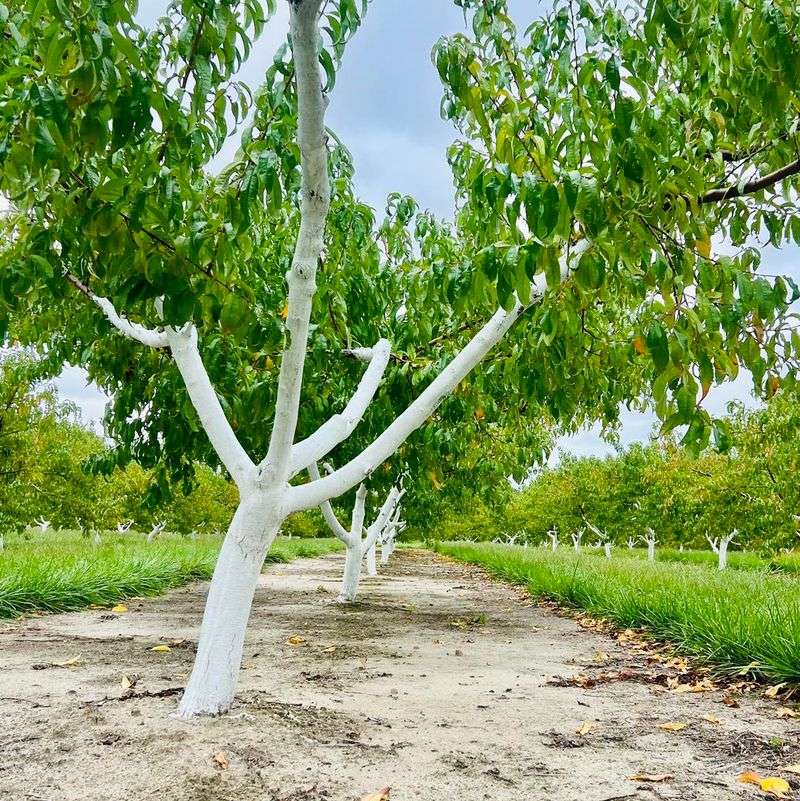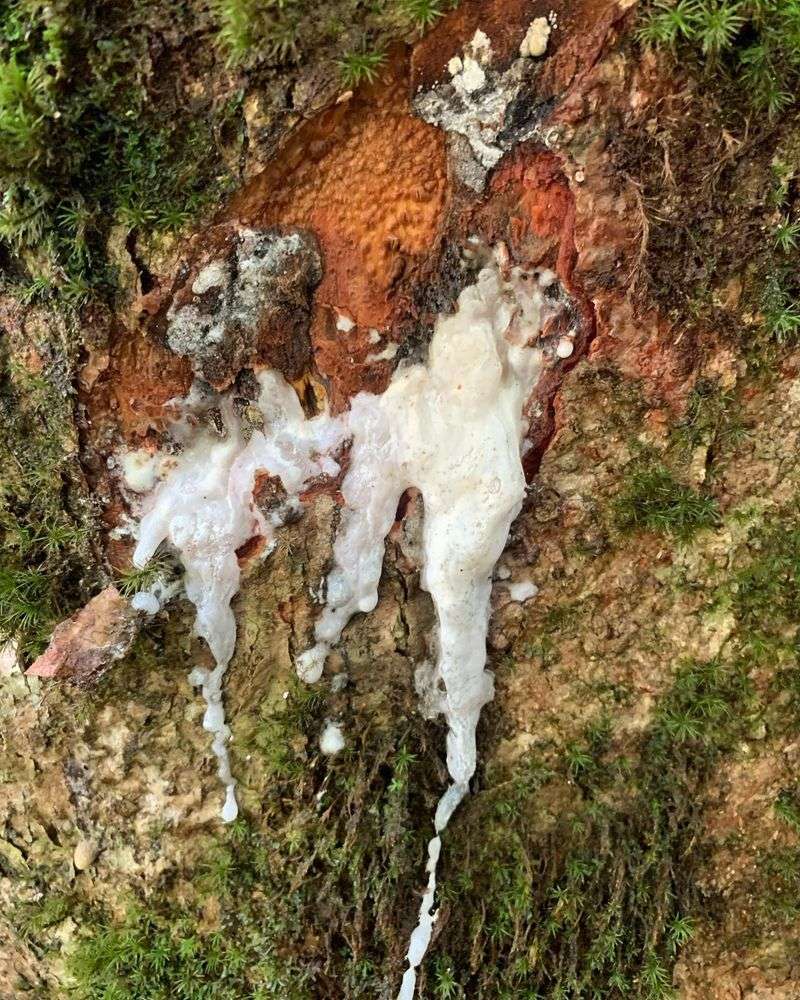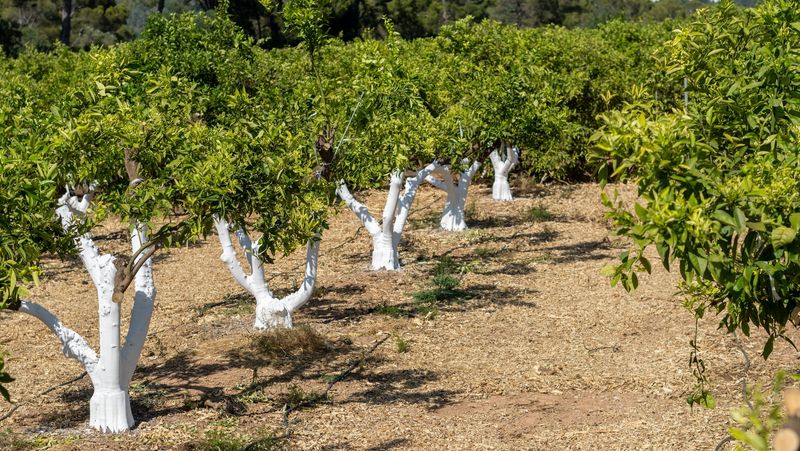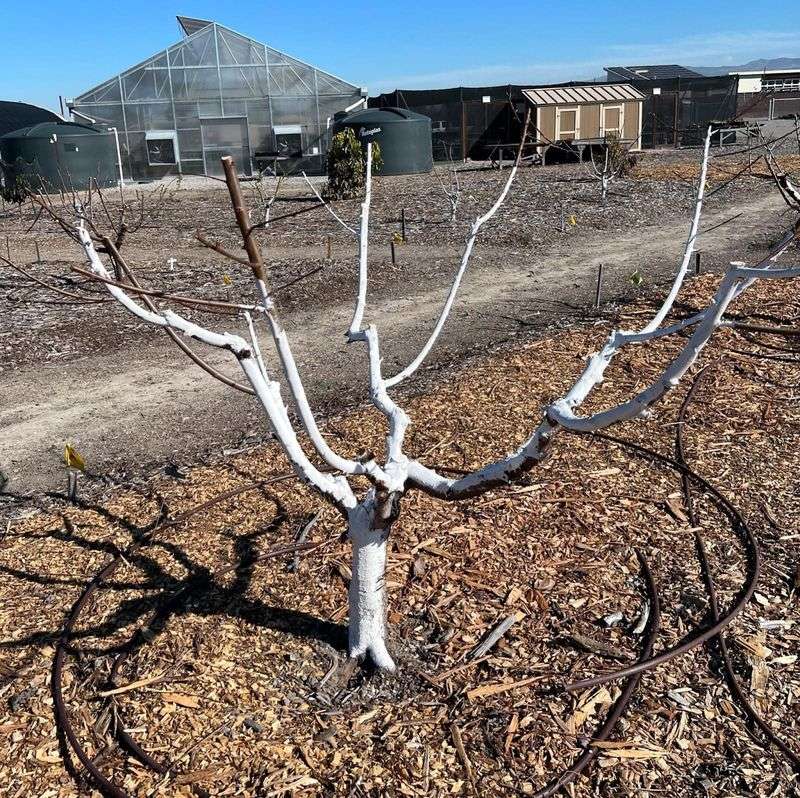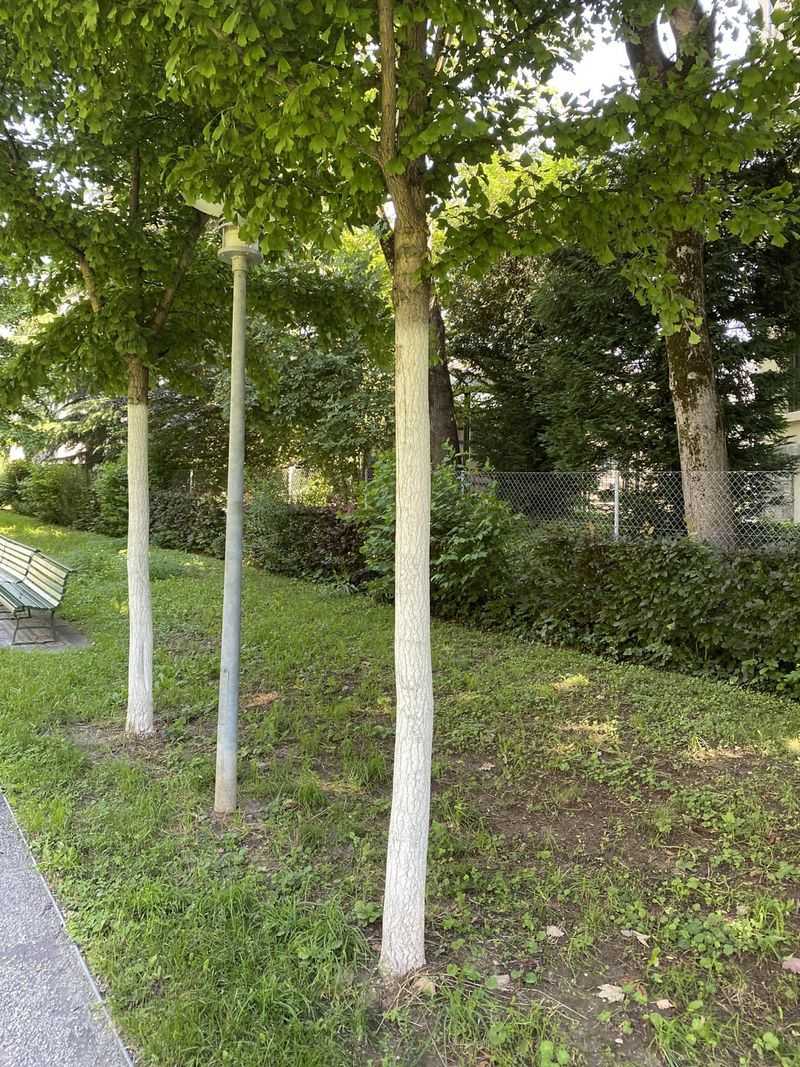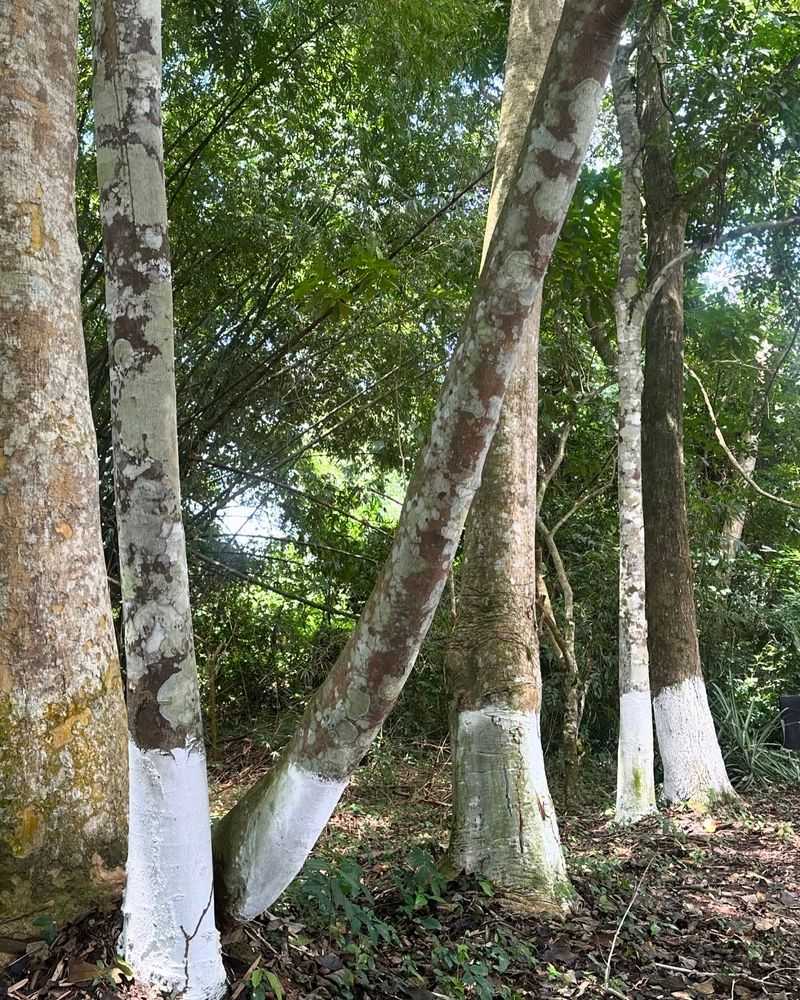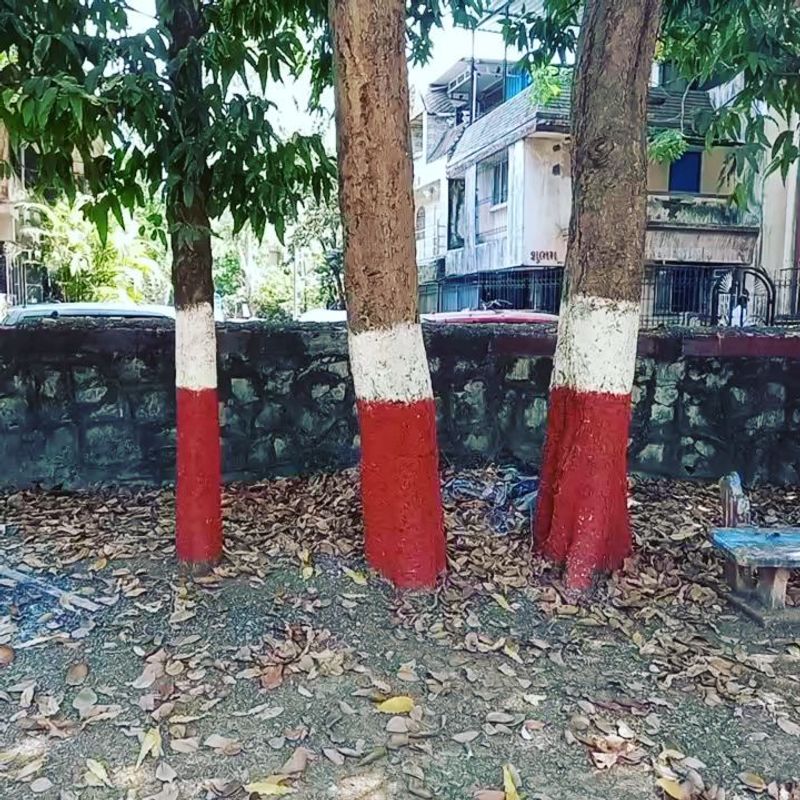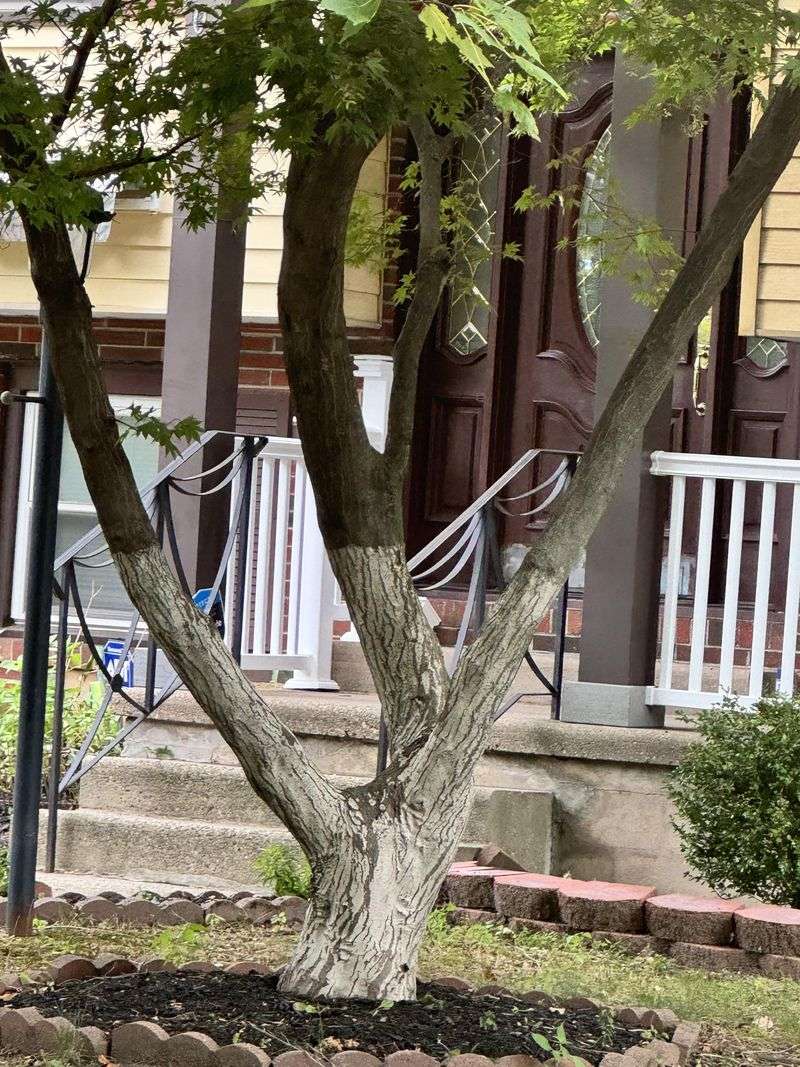You’ve probably noticed those bright white tree trunks and wondered what’s up with that. It’s not just an old-fashioned look—there’s some smart science behind the paint.
I’ve learned that those white trunks actually protect trees in ways you might never guess. From sun damage to pests, there’s more going on than meets the eye.
Let’s dig into why this simple step can make a big difference for trees!
1. Sun Scald Prevention
The white paint reflects sunlight instead of absorbing it. During winter months when trees are dormant, bark can warm up on sunny days and then rapidly cool at night, causing the cells to expand and contract.
This cycle creates cracks and damage known as sun scald. The reflective white coating keeps bark temperature more consistent, preventing this destructive freeze-thaw cycle that can leave trees vulnerable to disease and insects.
2. Insect Barrier
Many crawling insects struggle to navigate the slick, painted surface. The calcium carbonate (lime) often used in these white mixtures creates a hostile environment for boring insects and prevents them from easily accessing the tree.
Certain formulations even contain ingredients specifically designed to repel or kill common pests like borers, ants, and termites. Farmers have relied on this simple but effective physical barrier for generations before modern chemical pesticides became available.
3. Disease Protection
Traditional whitewash mixtures often contain natural fungicides like copper sulfate or borax. These ingredients help prevent fungal diseases from taking hold in the bark and spreading throughout the tree.
The alkaline nature of lime-based whitewash creates conditions unfavorable to many pathogens. Modern formulations sometimes include additional biocides that offer extended protection against a wide spectrum of disease-causing organisms while maintaining the traditional white appearance.
4. Rodent Deterrent
Mice, rabbits, and other small mammals often chew on tree bark during winter when food is scarce. The taste and texture of the paint discourage these hungry critters from making a meal of your valuable trees.
Some white paint mixtures include additional bitter substances or capsaicin to make them even more unpalatable to wildlife. This simple barrier can be especially important for young trees and in rural areas where rodent populations are high.
5. Temperature Regulation
Dark tree bark absorbs heat, which can cause problems in hot climates. White paint reflects sunlight and helps maintain more consistent temperatures in the trunk’s sensitive cambium layer.
This temperature regulation is especially important for young trees and during extreme weather events. Studies have shown that painted trunks can be up to 10°F cooler than unpainted ones on hot summer days, reducing stress and preventing bark damage.
6. Frost Protection
Late spring frosts can devastate fruit trees that have already begun to bud. White paint helps delay warming during deceptively warm spring days, which can trigger premature budding.
By keeping the trunk cooler during these fluctuating spring temperatures, the tree is less likely to break dormancy too early. This delayed response gives fruit trees a better chance of avoiding the devastating effects of late frosts on early blossoms.
7. Drought Resistance
White paint helps reduce water loss through the bark. By reflecting sunlight rather than absorbing it, the trunk doesn’t heat up as much, which decreases evaporation and transpiration rates.
This water conservation technique has been particularly valuable in arid regions. Farmers in Mediterranean climates have long used this method to help their olive and citrus trees survive hot, dry summers with minimal irrigation.
8. Extending Tree Lifespan
The cumulative benefits of white paint can significantly extend a tree’s productive years. By preventing stress, disease, and physical damage, trees can remain healthy and productive for decades longer.
Commercial orchards rely on this technique to maximize the return on their investment in fruit and nut trees. Historical records show that regularly whitewashed trees in traditional Mediterranean orchards often remained productive for over a century.
9. Wound Healing
Trees with existing damage benefit from protective white paint. The coating creates a physical barrier that prevents pathogens from entering wounds while the tree’s natural healing process works.
Traditional lime-based whitewash has mild antiseptic properties that help clean wounds. Modern formulations sometimes include growth hormones or wound dressings that actively promote callus formation and accelerate the healing of damaged areas.
10. Visibility Enhancement
White trunks stand out clearly against landscape backgrounds, making them less likely to be damaged by vehicles or equipment. This practical benefit is especially important for young trees in public spaces and along roadways.
The increased visibility also helps during night maintenance operations in orchards. Many commercial growers appreciate this side benefit during harvesting season when workers and machinery are active in low-light conditions.
11. Cost-Effective Protection
Traditional whitewash ingredients—lime, water, and salt—are incredibly inexpensive compared to commercial tree treatments. Even modern formulations cost just pennies per tree while providing multiple benefits.
The application process requires minimal training and equipment. A single application typically lasts 1-2 years, making this one of the most economical tree protection methods available to both commercial growers and home gardeners.
12. Historical Significance
White-painted trunks connect modern orchards to agricultural traditions dating back centuries. Ancient Romans documented using lime on fruit trees, and the practice spread throughout Europe and eventually to colonial America.
Many regional variations developed over time. Spanish settlers brought their specific whitewash recipes to California missions, while German immigrants introduced slightly different formulations to the Midwest, creating distinctive regional orchard aesthetics that persist today.
13. Monitoring Tool
The white background makes it easier to spot pest problems early. Insects, egg masses, and disease symptoms stand out dramatically against the white trunk, allowing for faster intervention.
Commercial growers use this visual advantage during routine inspections. Some even add special indicators to their whitewash that change color when certain pests or pH changes occur, creating an early warning system built right into the tree’s protective coating.
14. Environmental Friendliness
Traditional whitewash is biodegradable and non-toxic, making it safe for wildlife and beneficial insects. Unlike many chemical treatments, it breaks down naturally without harmful residues.
The main ingredient, lime, eventually weathers away and returns to the soil as calcium. This environmentally sound approach aligns with organic growing practices and sustainable agriculture, allowing for effective tree protection without ecological compromise.
15. Aesthetic Appeal
Beyond practical benefits, white trunks create a distinctive landscape feature. Many homeowners and municipalities choose this treatment partly for its clean, orderly appearance in landscaped settings.
The bright trunks provide visual interest during winter months when trees are bare. This decorative aspect explains why the practice persists in some areas even when modern chemical alternatives are available—the traditional look remains desirable for both practical and aesthetic reasons.

